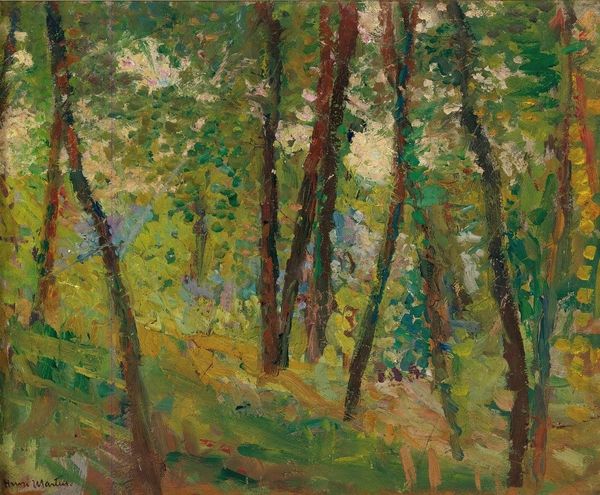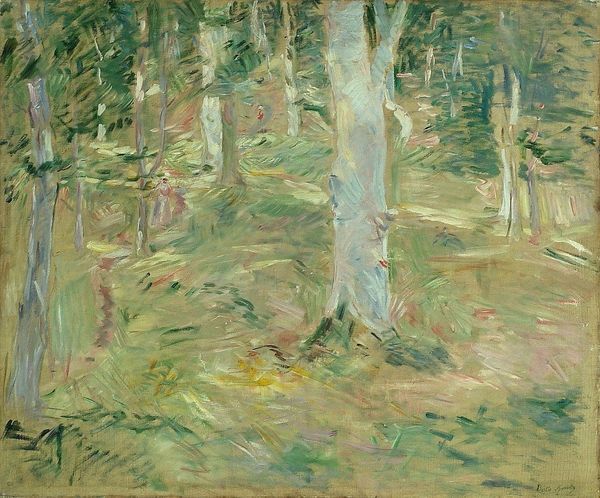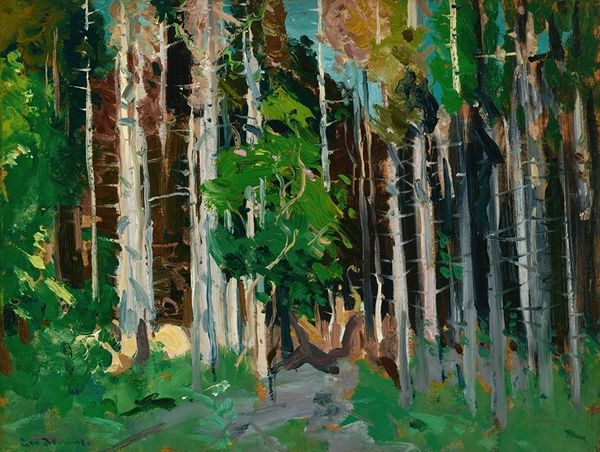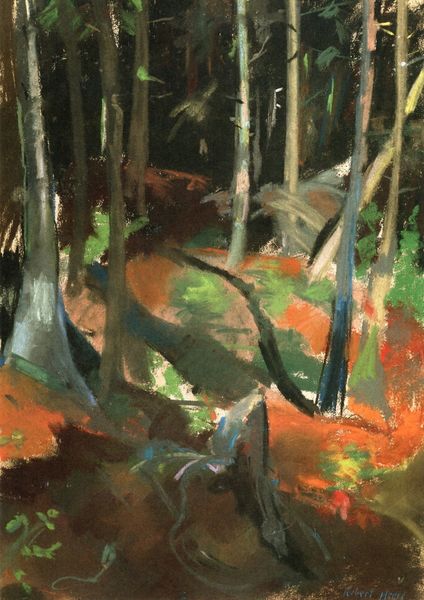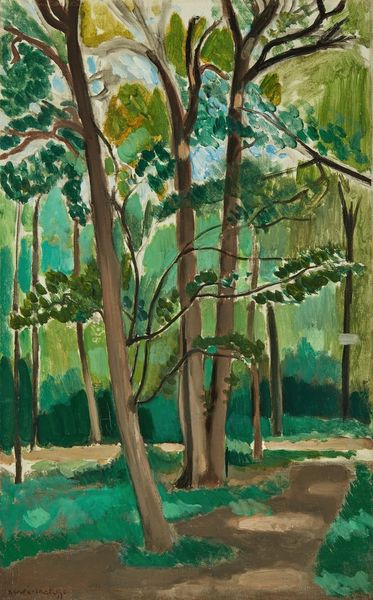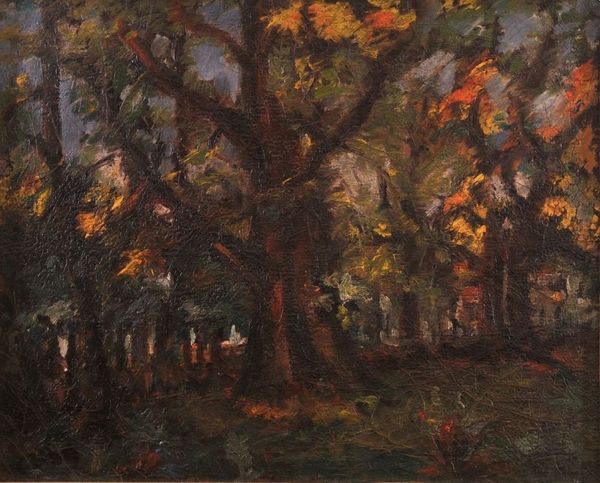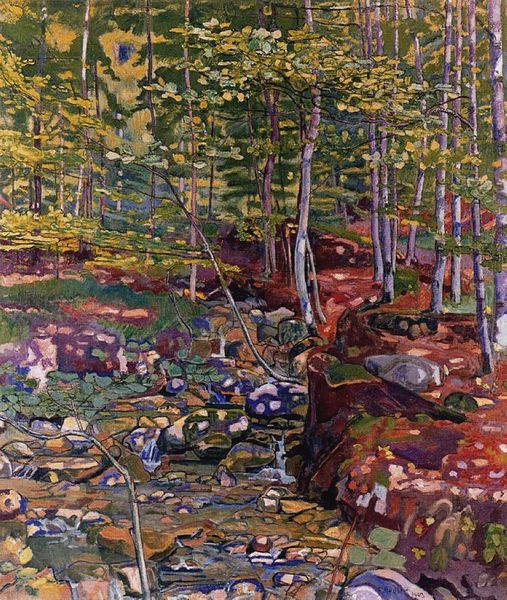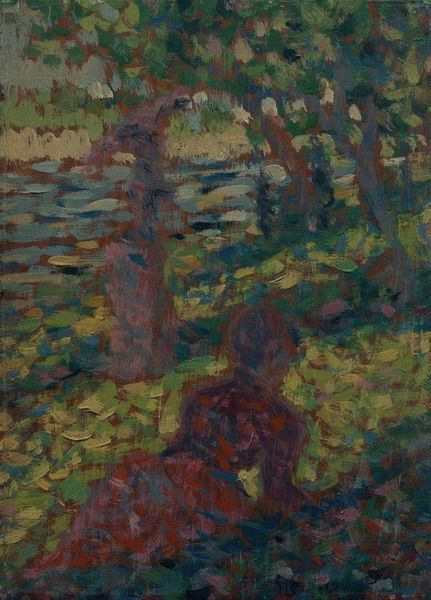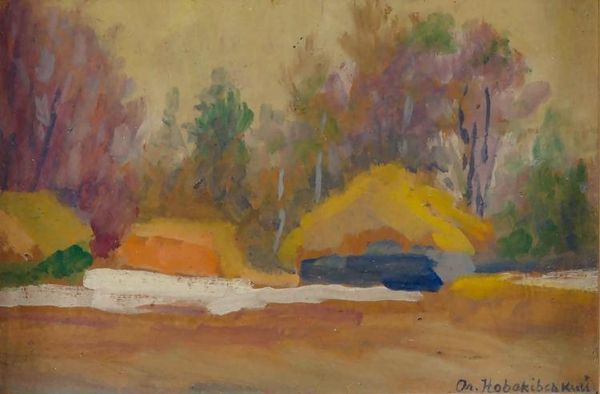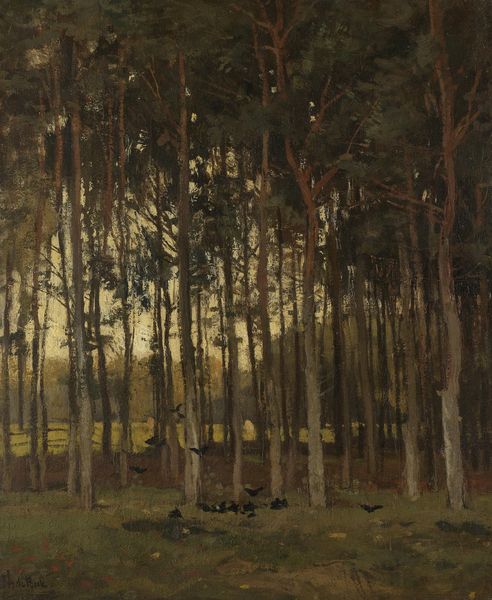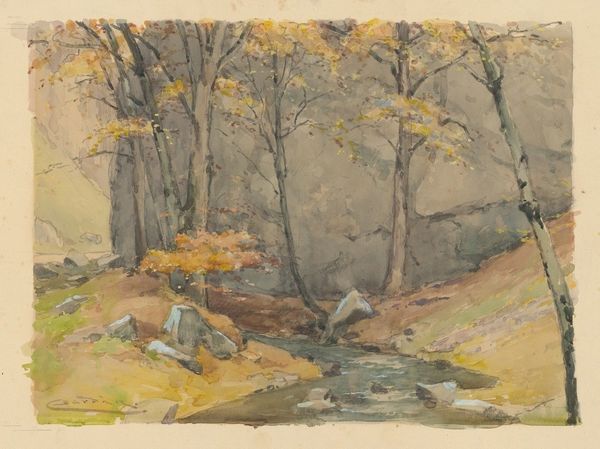
Copyright: Alekos Kontopoulos,Fair Use
Editor: We're looking at "The Forest," painted in 1938 by Alekos Kontopoulos. It's an oil painting, done en plein-air, and has a distinctive impressionistic style. I find the way the light filters through the trees almost dreamlike, yet that red shape disrupts the serenity somehow. What do you see in this piece, especially considering the period in which it was created? Curator: That red form definitely catches the eye, doesn't it? It's a stark, almost unsettling contrast to the otherwise harmonious landscape. Consider the historical context. 1938 – the world was on the brink of war. Could that splash of red symbolize a looming threat, an intrusion of violence upon the natural world? The forest, often seen as a place of refuge, is here marked by something artificial, something potentially dangerous. How does that contrast affect your initial impression now? Editor: It definitely shifts things. I initially saw the red as an aesthetic choice, maybe just a color accent, but framed by the political climate it suggests vulnerability. Were landscape paintings often used this way, as commentaries on societal anxieties? Curator: Landscape painting, while seemingly apolitical, has always been entangled with notions of national identity, ownership, and even escapism. Think about the rise of industrialization; painting nature became a way to both idealize a disappearing way of life and grapple with the changes happening around them. Kontopoulos was working in Greece at a time of increasing political instability. This idyllic scene then could be seen as a commentary on a fragile peace. Do you think the impressionistic style itself, with its fleeting moments of light, might further emphasize that sense of impermanence? Editor: Absolutely. The ephemeral quality of impressionism paired with the anxiety of the time…it makes the forest feel less like a sanctuary and more like a place under threat. I hadn't considered that depth when I first looked at it. Curator: It’s in these contextual nuances that artworks truly begin to speak. Thinking about the piece’s cultural moment really transforms how we understand it.
Comments
No comments
Be the first to comment and join the conversation on the ultimate creative platform.
